TIME FLIES, OR DOES IT?
A Real Olde Tyme Country Fair
Eighteenth century essayist and poet Charles Lamb wrote, “Nothing puzzles me more than time and space; and yet nothing troubles me less.” I agree and disagree. You can always revisit a space, but time, it keeps moving; there’s no grasping on to it.
I was reminded of Lamb’s musing on a recent visit to Maine. There were two reasons for the visit, the first being to attend and give a couple of presentations at the Common Ground Fair, organized and on the grounds of the Maine Organic Farming and Gardening Association (mofga.org). I highly recommend a trip to the Fair, which is always held around the third week in September.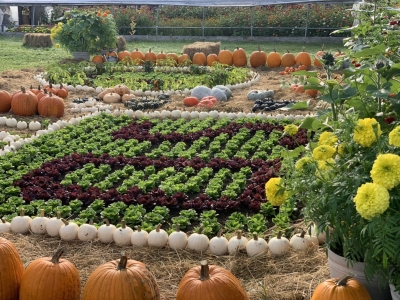
This is not your usual country fair. For one thing, you won’t find bright lights and noisy rides there; the Fair closes down at the end of each day. What you will find at the Fair is a wide array of Maine grown and Maine produced food, wool and woolen goods, wooden bowls and spoons, and numerous other items. Also many workshops and demonstrations of scything, spinning wool, blacksmithing, and other rural skills, and live music and plenty of livestock.
A Mere Half Century
I haven’t forgotten about Charles Lamb. His musings speak into the second part of my visit, which was to Four Season Farm, home, along with his wife Barbara Damrosch, of farmer, author, and a leading proponent of organic farming, Eliot Coleman. Barbara, no slouch in gardening, has also authored books and designed ornamental gardens, one of which meets you right outside their back door. This was not my first visit with Eliot.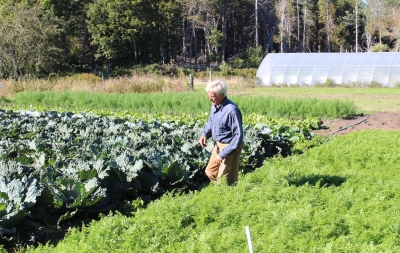
It’s hard to get a grasp on time when I contemplate that my first visit with Eliot was 50 years ago! (Is that visit a memory or a memory of a memory? One moment it might seem like an instant ago. From another perspective, it’s an eon ago.) At that visit with Eliot, I knew virtually nothing about gardening or farming, having only recently dug up a lawn to plant my first garden, and finished my second semester of graduate school in soil science.
Eliot and his family were then living in a small cabin he had built. I did some work on his farm and he was most generous in answering my constant barrage of questions and inviting me, after dark, into his cabin to pore through and takes notes on his then small library of books about agriculture.
Years later, I showed up again at Eliot’s. This time, with almost ten years of intensive gardening under my belt in addition to a Master’s degree in soil science and a doctorate degree in horticulture, I knew a little more about gardening with still lots to learn. I’ve revisited Eliot every ten to fifteen years since.
Striving for a Balance
Neither Eliot nor I have lost our enthusiasm for growing plants or interest in pushing the envelope in good growing. Not that we always agree on all things agricultural. I practice no-till; Eliot tills. I use drip irrigation; Eliot uses sprinklers. I eschew rock powders as supplements; Eliot has used them.
However, especially during this last visit, I realized how much our views and practices are coalescing over time. Sure, Eliot tills, but only to a shallow four inches. As for me, I’m realizing that after laying an inch of compost on top of the ground every year, the top few inches of my garden beds has little “soil,” that is, clay, silt, and sand.
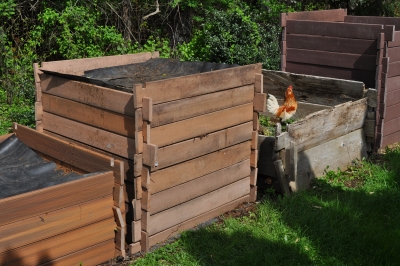
My compost bins
As one soil scientist described it to me, it’s more of a “growing medium” than a soil. Is that good?
As far as drip versus sprinkler irrigation, or even till versus no-till: No garden or farm is a natural environment. Left to her own devices, Mother Nature wouldn’t grow the heads of cabbages and lettuces, nor the swelling roots of winter radishes and turnips, now in my garden. There are many ways to cultivate plants.
Different ways, yes, which is not to say that all are equally good as far as their effect on the environment and the health, healthfulness and flavor or beauty of the plants. Tillage, for instance, charges the ground with oxygen, essentially fertilizing plants by stimulating microbial action and release of nutrients, especially nitrogen. In so doing, it “burns” up organic matter (humus), which is a witch’s brew of natural compounds that increases both soil drainage and aeration, and supports populations of beneficial micro- and macro-organisms. Decomposition of organic matter by tillage also releases carbon dioxide into the atmosphere, and can cause soil compaction, over time, just beneath the zone of tillage.
So we want organic matter to release nutrients for plant growth, but not too much or too fast. Which depends, among other things on depth and frequency of tillage. An increasing focus of organic agriculture is (or should be) sustainability, which means not “robbing Peter to pay Paul by, for instance, burning up organic matter faster than it’s regenerated or replaced.
The benefits of organic matter can be accrued by regularly refreshing the ground with manure, hay, young meadow mowings, compost, etc. Eliot’s sustainable approach, now, is to set aside land, either dedicated as such or as part of a crop rotation, on which to grow organic materials.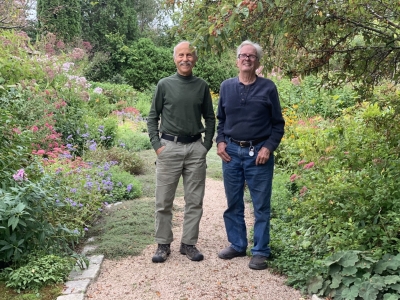
My approach has been to make compost, and lay a one-inch layer of it on each bed every year. “Food” for my compost, besides all garden and kitchen waste (as well as old cotton or wool clothing), is hay I scythe from my small meadow and periodic additions of horse manure, a waste product from a nearby stable.
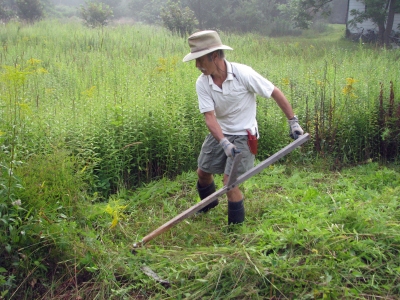
Although I computed that the one inch annual layer of compost should supply all the nutrients, including nitrogen, for a year of intensively cultivated vegetables, I used to add, for insurance, an annual sprinkling of soybean meal. That is, till I gave “sustainability” some thought and decided to walk my talk and eschew the soybean meal. The meadow is large enough or my garden is small enough, that by scything different portions yearly and waiting long enough to return to each scythed portion, an area ground can naturally regenerate itself before I return to it with my scythe.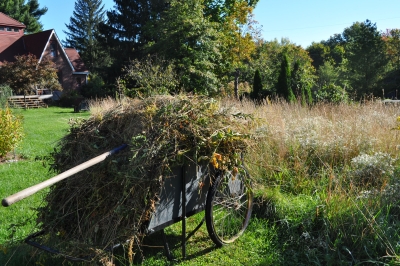
(Delving deeply into the science behind what’s going on in a garden or on a farm makes growing plants much more interesting to me, which was the impetus for my recent book The Ever Curious Gardener: Using a Little Natural Science for a Much Better Garden.)


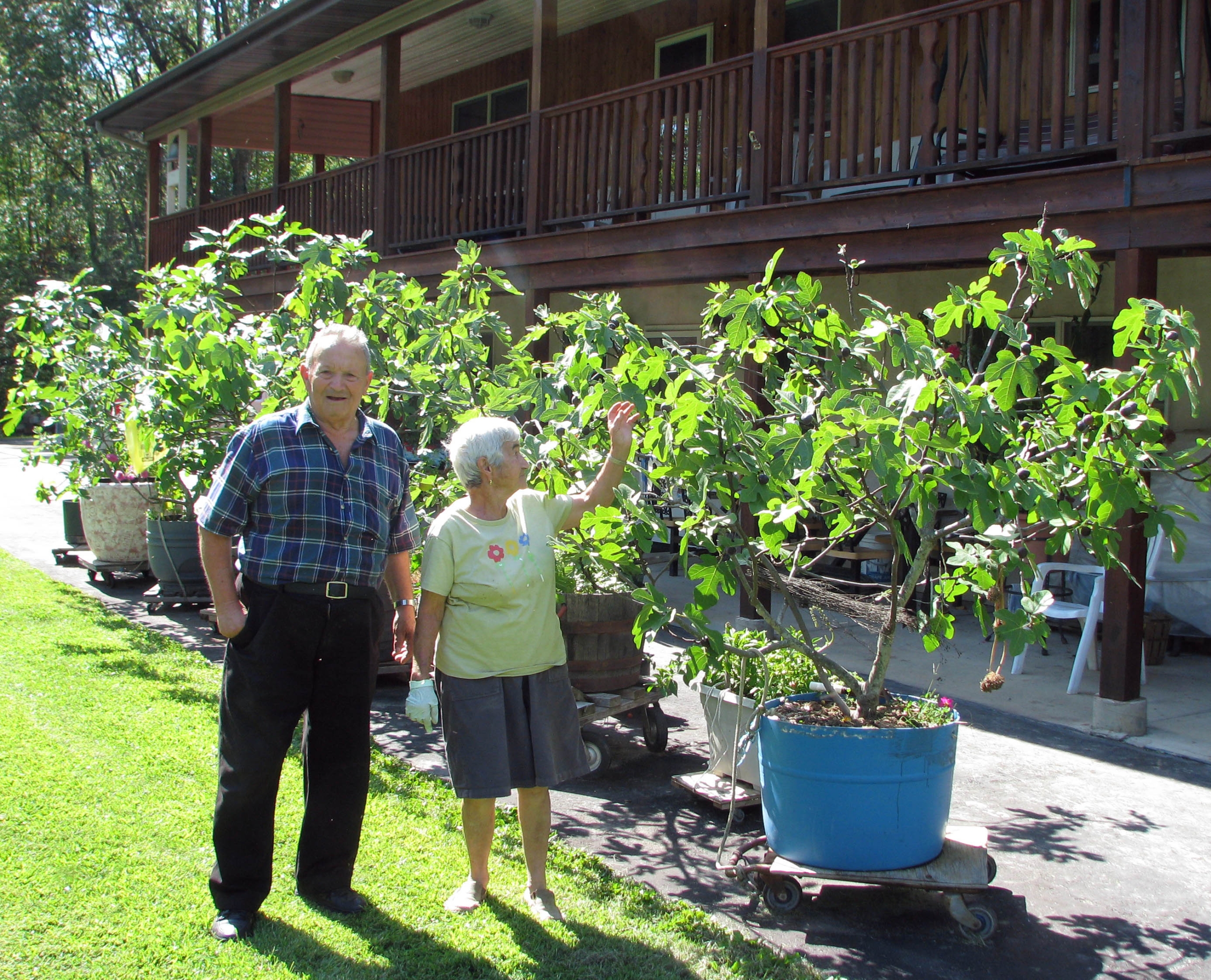

can you comment on how Eliot has changed on the “now” part of setting land aside or rotating vs prior?
Eliot’s practices have evolved over the years. I don’t feel comfortable relaying the details of that evolution. It might do him an injustice. Details have been spelled out in his books. We can wait for another book to bring everything up to date.
Our family attended our first Common Ground fair and had hoped to attend your lecture on Saturday but with the large crowds (3rd most attended in the history of the fair), we arrived late. I did however have your book ordered and am excited to delve in. A 2nd year newbie here!
I hope to get back to the Fair again soon.
Are you adding your one inch of compost at the same time every year?
Not necessarily at the same time. Anytime space opens up. But typically, I do it mostly as I clear beds in fall. In any case, one inch once a year.
I have benefited from all your knowledge of the garden. And so enjoyed watching your you tube videos, will you be doing more of those in the future?
I’m not sure about more videos. Reading your comment, though, gives me a little push in the direction of “yes.”